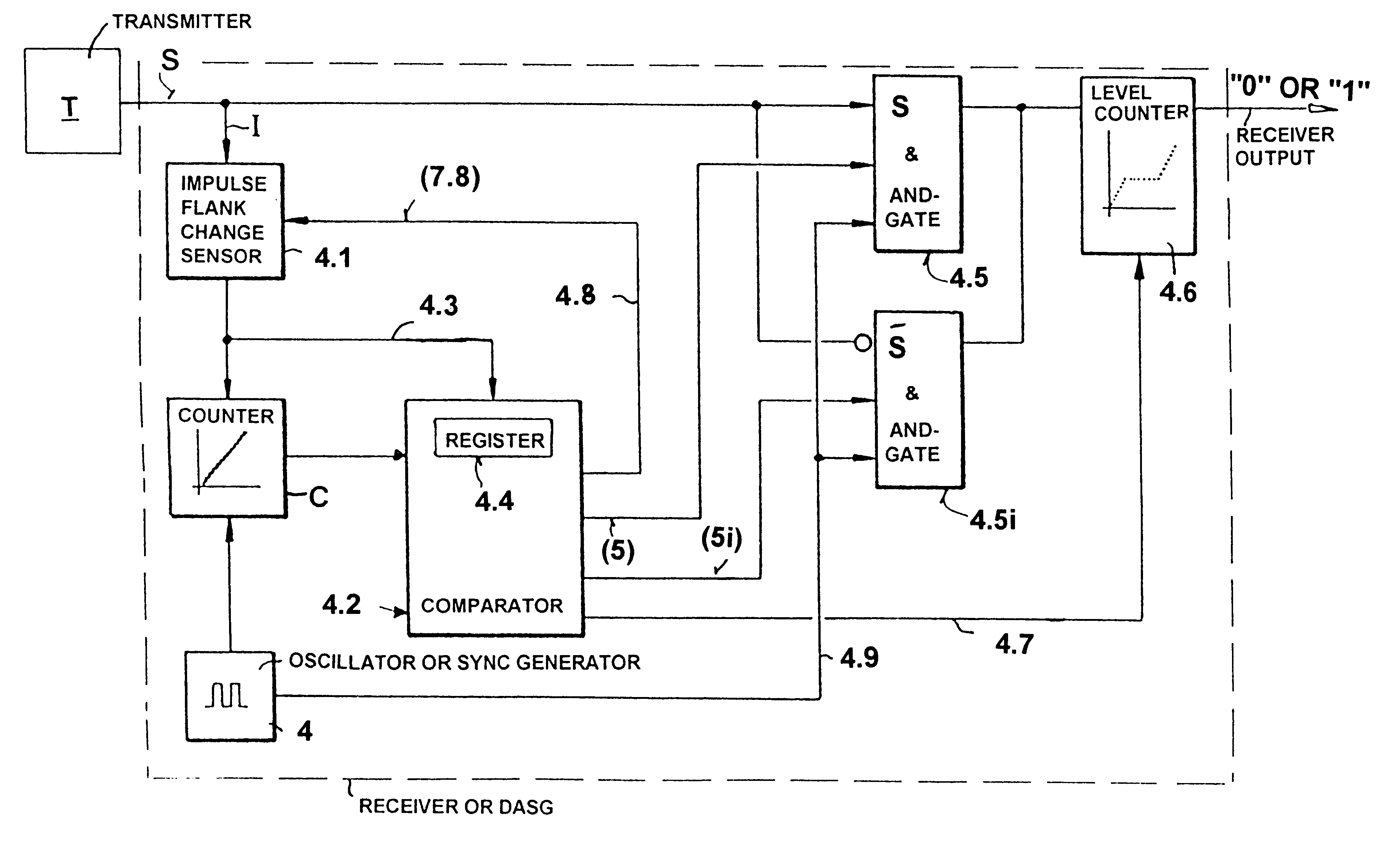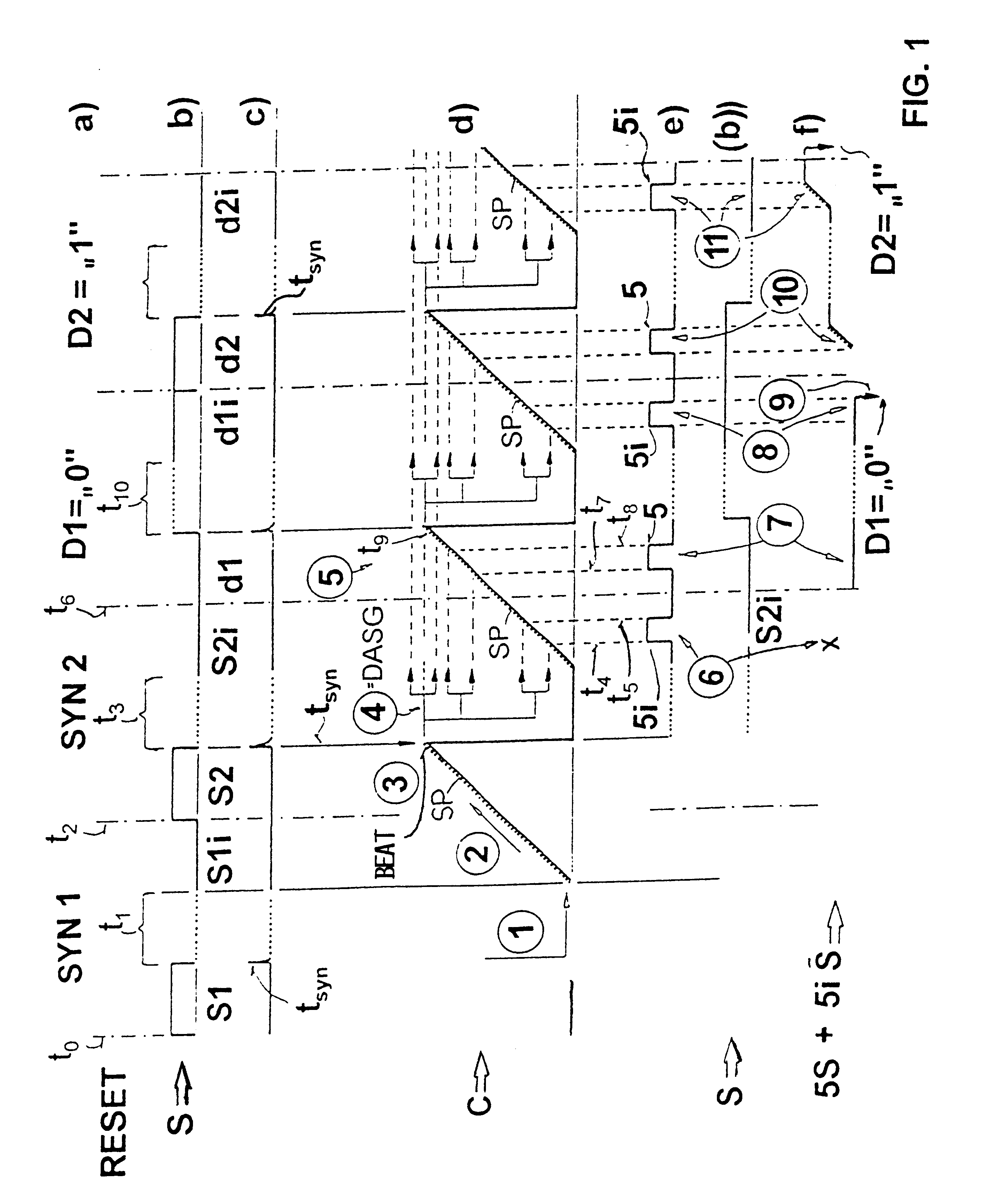Method for transmitting digital data impulses
- Summary
- Abstract
- Description
- Claims
- Application Information
AI Technical Summary
Benefits of technology
Problems solved by technology
Method used
Image
Examples
Embodiment Construction
The term synchronization a used herein has been shortened to sync, e.g. sync frequency. The following definitions for the various frequencies here involved are used in this text. A sync frequency is derived from a sync pulse duration. A data frequency is derived from a data pulse duration. Preferably the sync frequency and the data frequency are identical to each other. A stepping frequency is generated by an oscillator 4 to provide stepping pulses SP. A current sync frequency is derived from at least one count of steeping pulses. A current sync frequency becomes a current accepted sync frequency if the current sync frequency meets certain criteria as described below. A data acquisition frequency corresponds to a current accepted sync frequency.
FIG. 1 shows the time sequence diagrams 1a to 1f with reference to a common time base on an abscissa which is not shown in detail. The time base shows a virtual interruption in the center of each impulse. This virtual interruption of an impul...
PUM
 Login to View More
Login to View More Abstract
Description
Claims
Application Information
 Login to View More
Login to View More - R&D
- Intellectual Property
- Life Sciences
- Materials
- Tech Scout
- Unparalleled Data Quality
- Higher Quality Content
- 60% Fewer Hallucinations
Browse by: Latest US Patents, China's latest patents, Technical Efficacy Thesaurus, Application Domain, Technology Topic, Popular Technical Reports.
© 2025 PatSnap. All rights reserved.Legal|Privacy policy|Modern Slavery Act Transparency Statement|Sitemap|About US| Contact US: help@patsnap.com



